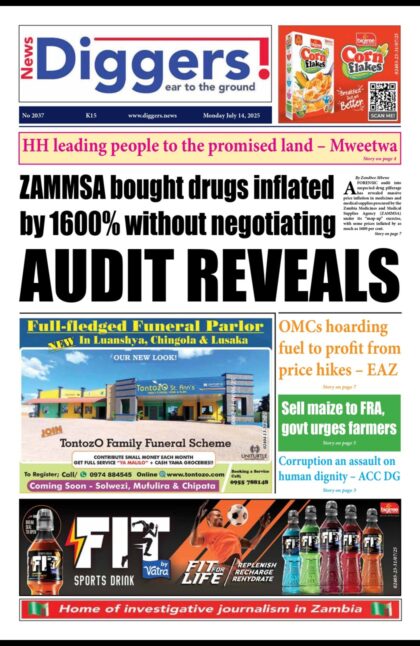COMMERCIAL banks’ average lending rates on loan facilities marginally dropped by only 0.6 percentage points to 25.1 per cent by the end of last year, mainly in response to a sustained low Monetary Policy Rate (MPR).
According to Bank of Zambia (BoZ) data availed following the MPR announcement, lending rates linked to the MPR finally started to respond by the end of last year, marginally declining to 25.1 per cent from 25.7 per cent by September 30, 2020.
The benchmark Policy Rate had twice been maintained at eight per cent last year until it was slightly adjusted upwards by 50 basis points to 8.5 per cent this month.
“Market interest rates continued to trend downwards, influenced largely by the accommodative Monetary Policy stance. The commercial banks’ average lending rate declined to 25.1 per cent in December from 25.7 per cent in September. The savings rate for 180-day deposits also reduced to 9.8 per cent from 10.3 per cent. Similarly, the composite yield rate on Treasury Bills declined to 21.2 per cent from 22.7 per cent. The composite Government Bond yield rate, however, rose to 32.9 per cent from 32.3 per cent, reflecting weaker demand for longer-dated instruments,” BoZ governor Christopher Mvunga said.
“The overnight interbank rate declined further to a quarterly average of 8.06 per cent in the fourth quarter of 2020 from 8.57 per cent and was contained within the Policy Rate Corridor of 7.0 per cent to 9.0 per cent throughout the period. This was largely attributed to the accommodative Monetary Policy measures implemented earlier in the year.”
He added that lending to the private sector reduced to 8.5 per cent from 13.8 per cent due to strict lending conditions from commercial banks.
“Credit to the private sector moderated to 8.5 per cent in December, year-on-year, from 13.8 per cent in September due to strict lending conditions as banks sought to curb elevated credit default risk. However, credit to government continued to grow at a strong pace underpinned by issuance of Government securities, particularly for procurement of agricultural inputs under FISP and clearance of fuel arrears to suppliers. This continued to contribute to the sustained strong annual growth in money supply (M3), at 46.4 per cent, in December, 2020,” he added.
Mvunga further disclosed that demand for government securities had weakened with bid amounts falling short of amounts on offer by 20 and 70 per cent for Treasury Bill and Government Bonds, respectively.
“Demand for government securities weakened as investor appetite reduced. Both Treasury Bills and Government Bond auctions were undersubscribed with the bid amounts falling short of amounts on offer by 20 per cent and 70 per cent, respectively. However, funds raised from the auctions were adequate to cover maturities resulting in a marginal surplus of K0.3 billion. Additional securities were issued through private placements mostly to finance the Farmer Input Support Programme (FISP) and partially clear fuel arrears to suppliers. Consequently, the stock of Government securities rose by 9.7 per cent to K30.2 billion. At end-December, 2020, Government securities held by non-residents increased by 30.9 per cent to K8.4 billion, representing 14.1 per cent of the total securities. 93 per cent of these holdings were in Government Bonds,” said Mvunga.



















